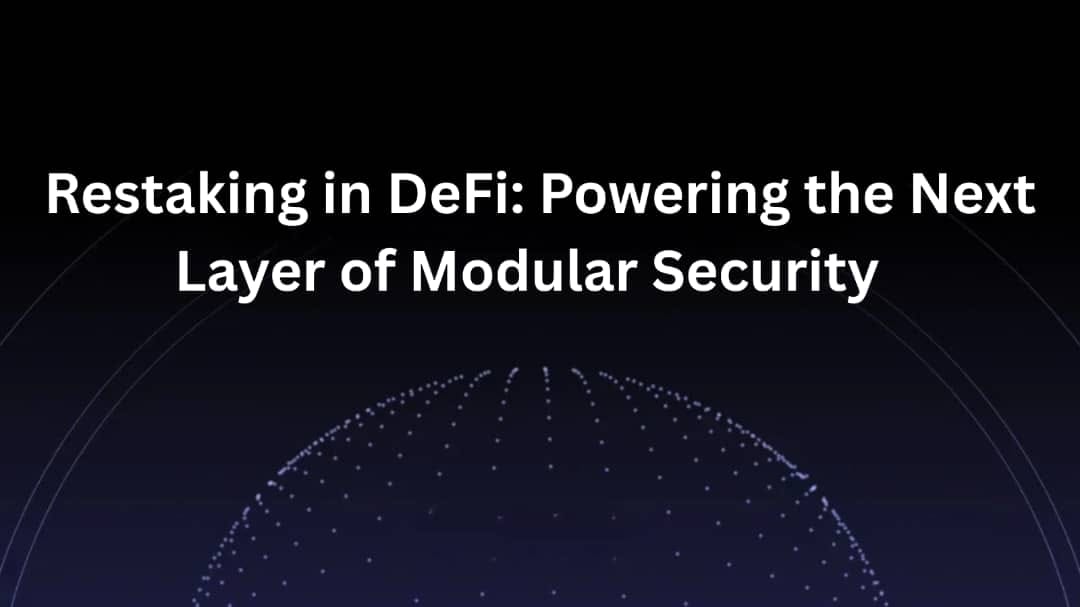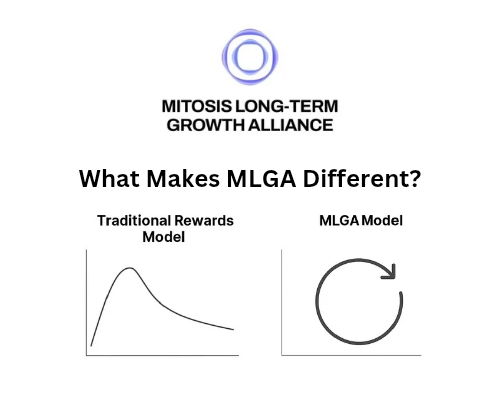Restaking in DeFi: Powering the Next Layer of Modular Security

Introduction
As decentralized finance (DeFi) continues to evolve, the need for robust security mechanisms becomes increasingly critical. One of the most promising innovations in this space is restaking, particularly through the Eigenlayer protocol. Restaking allows users to leverage their staked assets across multiple decentralized applications (dApps), including oracles, bridges, and other services, thereby enhancing economic security. This article explores how Eigenlayer's restaking primitives are evolving into essential economic security layers for various DeFi applications.
1. Overview of Eigenlayer's Restaking Mechanism
1.1 What is Restaking?
Restaking is a mechanism that enables users to reuse their staked assets to secure multiple protocols simultaneously. In the context of Eigenlayer, Ethereum validators can extend the security of their staked ETH or liquid staking tokens (LSTs) to various Actively Validated Services (AVS). This innovative approach not only amplifies Ethereum's cryptoeconomic security but also provides stakers with additional rewards.
1.2 Core Features of Eigenlayer
- Restaking Mechanism: Eigenlayer allows Ethereum validators to restake their assets, effectively enabling them to secure multiple services at once. This mechanism enhances the overall security of the Ethereum network while providing stakers with opportunities to earn additional rewards.
- Pooled Security: By pooling security across various services, Eigenlayer reduces capital inefficiency. Validators can secure multiple AVSs simultaneously, fostering trustless innovation and enhancing the reliability of decentralized applications.
- Operator-Delegate Model: Eigenlayer employs an operator-delegate model where operators run the AVS software, while restakers delegate their stakes. This creates a double opt-in system for shared security, ensuring that both operators and stakers are aligned in their interests.
2. Economic Security Layers
1. Enhanced Security for Oracles and Bridges
Eigenlayer's restaking mechanism provides a robust framework for securing oracles and bridges, which are critical components of the DeFi ecosystem. By leveraging pooled security, these services can be backed by the economic security of staked ETH, significantly reducing the risk of attacks and enhancing the reliability of data feeds and cross-chain transactions.
- Oracles: Oracles play a vital role in providing real-world data to smart contracts. By securing oracles with restaked assets, Eigenlayer ensures that the data provided is reliable and tamper-proof, thereby enhancing the overall integrity of DeFi applications.
- Bridges: Cross-chain bridges facilitate the transfer of assets between different blockchain networks. By utilizing restaked security, Eigenlayer enhances the security of these bridges, reducing the likelihood of exploits and ensuring safe asset transfers.
2. Yield Stacking Opportunities
Restaking also opens up new avenues for yield generation. Stakers can earn additional rewards from securing new AVSs, including options for:
- Native Restaking: Users can restake their ETH to secure specific AVSs, earning rewards based on the performance of those services.
- Liquid Staking Token Restaking: Users can leverage their liquid staking tokens to participate in restaking, allowing them to maintain liquidity while still contributing to the security of various protocols.
- LP Tokens Restaking: Liquidity providers can restake their LP tokens, further enhancing their earning potential while securing the underlying assets.
This flexibility allows users to optimize their returns while actively participating in the security of various protocols.
3. Risks and Considerations
1. Slashing Risks
While restaking offers numerous benefits, it also comes with inherent risks. Validators face potential slashing if they breach the terms of their restaking agreements. This risk necessitates careful management and a thorough understanding of the conditions associated with each AVS. Validators must remain vigilant to avoid penalties that could result in the loss of their staked assets.
2. Centralization Concerns
Another consideration is the potential for centralization within the Eigenlayer ecosystem. The dominance of large staking pools could threaten decentralization, making it crucial to monitor the distribution of staked assets. Ensuring a diverse and decentralized validator set is essential for maintaining the integrity and security of the network.
4. Future Prospects
1. Integration with Other Blockchains
Eigenlayer's restaking model is expected to evolve further, with potential integrations into other blockchain ecosystems. This expansion could enhance economic security across multiple platforms, creating a more interconnected and secure DeFi landscape.
2. Innovative Token Models
The development of new token business models utilizing restaked ETH and AVS native tokens could create diverse fee structures and operational frameworks. These innovations would further incentivize participation in the Eigenlayer ecosystem, attracting more users and enhancing overall network security.
Conclusion
Eigenlayer's restaking primitives are transforming the landscape of decentralized finance by providing a modular approach to economic security. By enabling stakers to secure multiple protocols while earning rewards, Eigenlayer is paving the way for a more secure and efficient DeFi ecosystem. As the technology matures, it holds the potential to redefine how security and economic incentives are structured in the blockchain space. The evolution of restaking will play a crucial role in enhancing the resilience and reliability of DeFi applications, ultimately contributing to the growth and sustainability of the entire ecosystem.

Comments ()